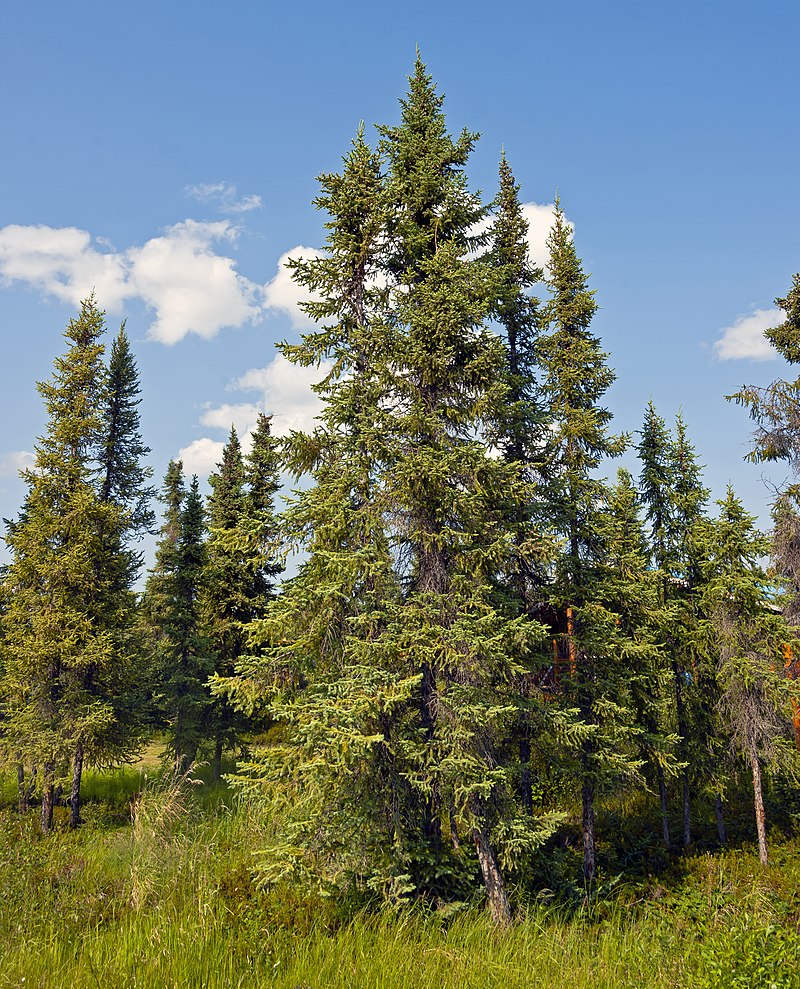
Photo by Daniel Case, from Wikimedia, CC BY-SA 3.0
Montenegro
Spruce
Picea

Photo by Daniel Case, from Wikimedia, CC BY-SA 3.0
General Description / Cultural Significance
Spruce (Picea), an evergreen conifer belonging to the Pinaceae family, is a dominant tree species in Montenegro’s mountainous forests. Characterized by its tall, straight trunk, conical shape, and needle-like leaves, spruce trees thrive in the cold, humid climates of the country’s high-altitude regions, such as Durmitor National Park, Biogradska Gora, and the Bjelasica mountain range. Their strong, flexible wood and aromatic resin make them ecologically and economically valuable. Spruces play a vital role in local biodiversity, providing habitat for numerous bird species, mammals, and fungi.
Spruce has deep cultural and historical significance in Montenegro. It has been used for centuries in traditional construction, including wooden homes, bridges, and churches, due to its durability and resistance to decay. In folklore, the tree symbolizes endurance, protection, and connection to nature, often associated with spirits of the forest and ancestral wisdom. Spruce wood is widely used in crafting musical instruments such as gusle, a traditional Montenegrin string instrument, reinforcing its role in national identity and heritage.
Spruce forests also hold spiritual significance, as they are often seen as places of tranquility and reflection. Many local communities engage in sustainable forestry practices to protect these ancient woodlands, recognizing their importance in maintaining ecological balance and cultural continuity. Additionally, spruce essential oil and resin have been traditionally used in herbal medicine for respiratory ailments and muscle relief, further highlighting its role in Montenegrin traditions.
Climate Change / Conservation Status
Spruce (Picea) forests in Montenegro are increasingly vulnerable to the effects of climate change. Rising temperatures, irregular precipitation patterns, and prolonged droughts have led to reduced growth rates, increased susceptibility to pests, and a higher risk of wildfires. One of the most significant threats is the proliferation of bark beetles (Ips typographus), which thrive in weakened spruce trees, causing extensive forest dieback. Additionally, extreme weather events such as storms and heavy snowfall can lead to structural damage, further weakening forest resilience.
Montenegro’s high-altitude spruce forests, particularly in protected areas such as Durmitor and Biogradska Gora National Parks, are also affected by shifting climatic conditions, which alter the delicate balance of their ecosystems. As warmer temperatures push the tree line higher, spruce populations face competition from broadleaf species and reduced suitable habitat. Changes in soil moisture and nutrient availability further stress these trees, leading to a decline in overall forest health.
Although spruce forests in Montenegro are not currently classified as endangered, they are increasingly at risk due to climate change, unsustainable logging, and habitat fragmentation. Conservation efforts focus on sustainable forest management, afforestation programs, and protective legislation. National parks and UNESCO Biosphere Reserves, such as Biogradska Gora, provide crucial refuges for these forests, ensuring the preservation of old-growth spruce stands.
Montenegro is also engaged in reforestation initiatives and monitoring programs to combat pest outbreaks and mitigate climate change impacts. Collaboration with international conservation organizations has led to research on genetic diversity and resilience strategies for spruce populations. Additionally, raising public awareness about the ecological importance of spruce forests and promoting sustainable forestry practices are essential to ensuring their long-term survival. While spruce remains an iconic and ecologically vital tree in Montenegro, ongoing conservation measures are necessary to protect these forests from the accelerating threats of a changing climate.
Alternate Names
Spruce Tree
European Spruce
Mountain Spruce
Picea abies (Norway spruce, one of the most common species in Europe)

